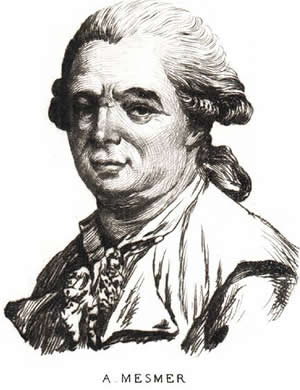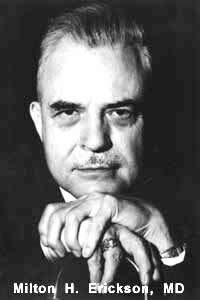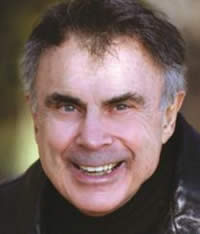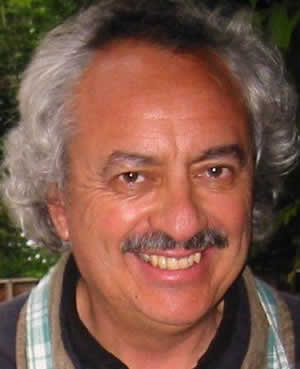Positive Health Online
Your Country

What Is Hypnotherapy - How does it Work - and why do we Need It....?
listed in holistic psychotherapy, originally published in issue 189 - December 2011
One of the earliest sources of psychotherapy and hypnotherapy began with Anton Mesmer's defence of his medical thesis: Dissertatio Physico-Medica de Planetarum Influxu 1766. Around the same time there were philosophical disagreements between mechanistic and naturalistic views of human nature, as Jacques Rousseau believed humans experienced developmental stages. Rousseau believed that the "exercise" of mental abilities facilitated the growth of the brain.
Almost 250 years later we have discovered that this was the forerunner of modern neuroscience research, documenting how novelty, exercise, training, and the voluntary focusing of attention, (Hypnosis) can facilitate the growth and re-organization of neural networks of the brain. This is the foundation of our current conceptions of how gene expression and brain plasticity in psychotherapy and therapeutic hypnosis can facilitate human brain development and healing.

{{PD-US}} published before 1923 and public domain in the US
Medical pioneers such as Anton Mesmer (1734-1815) and James Braid MD (1795-1860), who originally explored therapeutic hypnosis as a method of healing, had little understanding of how it actually worked. For example, James Braid's, in 1855, defines hypnotism in his book: The Physiology of Fascination. Braid coined the term 'Neuro-Hypnotism' (meaning a partial sleep or inhibition of the nervous system) which he himself abbreviated to 'Hypnotism':
"By the term "Neuro-Hypnotism," then, is to be understood "nervous sleep," ... a peculiar state of the nervous system, induced by a fixed and abstracted attention of the mental and visual eye, on one object, not of an exciting nature." [Braid, Neurohypnology, 1843] However, Braid later reviewed his idea that hypnosis was a specific neurological state, and replaced it with the theory that hypnosis was 'monoideation,' the fixation of consciousness on a single idea or object:
"The real origin and essence of the hypnotic condition is the induction of a habit of abstraction or mental concentration, in which, as in reverie or spontaneous abstraction, the powers of the mind are so much engrossed with a single idea or train of thought, as, for the nonce, (present time) to render the individual unconscious of, or indifferently conscious to, all other ideas, impressions, or trains of thought." [Braid, 1852: 53-54]
It is now believed that Braid actually invented the term "psychophysiology" to describe how mind and matter interact with each other to facilitate mind-body healing via therapeutic hypnosis. [Tinterow, 1972]
Braid's medical background - he was an eye surgeon - led him to concentrate on investigating what hypnosis could do for his patients. He discovered that hypnosis was of great value in what were described as "nervous disorders", in which an organic cause could not be traced for the symptoms - such as rheumatism, skin conditions, headache and so on. Braid acquired an impressive list of case histories, yet his findings were blocked by his colleagues.
Braid found an unexpected ally in William Benjamin Carpenter who had gained credit in academic circles as a Physiologist and specifically for his paper: Principles of Physiology - 1839. Carpenter was presented with the opportunity by Braid to account rationally for phenomena which science had dismissed, and which Carpenter was satisfied were genuine, such as insensibility to pain under hypnosis, and other experiences such as enhanced muscle strength.
Carpenter decided that the human brain must function on two different levels.
At this time the idea of an unconscious mind was unacceptable to the medical profession, but Carpenter felt he could shift hypnosis from metaphysics to neurophysiology and proposed his theories of the "unconscious". But the great majority of scientists and doctors remained unimpressed. Physicians regarded the functional disorders which Braid was able to cure with hypnosis as not real illnesses. Braid died in 1860; his life's work left hardly any influence or impact and Carpenter resumed his career as a physiologist.
The new discipline of neuroscience has emerged with the advent of new technologies for the scientific investigation of the natural relationships between mind and body that Erickson called his "naturalistic" and "utilization" techniques of hypnosis.

Milton Erickson MD
Milton H Erickson MD (1901 - 1980) is probably the most influential hypnotherapist of the 20th century and the originator of a novel and distinctive style of hypnotism, referred to as "Ericksonian."
"The hypnotic trance may be defined, for purposes of conceptualization, as a state of increased awareness and responsiveness to ideas." [Collected Papers, vol. IV, 174]
"It [hypnosis] is a state of consciousness - not unconsciousness or sleep - a state of consciousness or awareness in which there is a marked receptiveness to ideas and understandings and an increased willingness to respond either positively or negatively to those ideas." [Collected Papers, vol. IV, 224]
Erickson was described as one of the most influential hypnotherapists and psychotherapists of all time in a recent survey by The Psychotherapy Networker (March 2006). In hypnotherapy and psychotherapy Milton H. Erickson is ranked among the Top Ten along with Sigmund Freud, Carl Jung and others. Here is their brief portrait of Erickson, written about him a generation after his passing.
"Erickson spent a half-century developing an enormously subtle therapy of multileveled pattern recognition that was almost totally at odds with the mainstream therapies of his day. He discovered that most of the "rules" of life prescribing human limitations were arbitrary beliefs, not facts. His study and mastery of hypnosis taught him that altered mental states and trance were very much a part of everyday functioning."

Dr Ernest Rossi
"This understanding," wrote Dr Ernest Rossi, "formed the underlying principles of his later studies of psychopathology as well as his development of the naturalistic and utilization approaches to therapeutic hypnosis."
Erickson put it this way: "I don't attempt to structure my psychotherapy hypnosis except in a vague, general way. And in that vague general way, the patient structures it... in accordance with his or her own needs... The first consideration in dealing with patients is to realize that each of them is an individual... So in dealing with people, you try not to fit them into your concept of what they should be... You should try to discover what their concept of themselves happens to be... It isn't the amount of time. It isn't the theory of therapy. Its how you reach the personality by saying the right thing at the right time."
Further words of wisdom from Erickson: "Trust your unconscious. It's a very delightful way of living, a very delightful way of accomplishing things."
According to Erickson and Rossi and David Grove, trance (hypnosis) is very much part of natural every day functioning. It is not an enforced state of 'relaxation' brought about by the Traditional Hypnotherapists suggestion. The Professional Hypnotherapist, as opposed to the Traditional Hypnotherapist, is facilitating this natural state; the client (or patient) is structuring the therapy in accordance with his or her own needs.
The Professional Hypnotherapist is facilitating a client's own search for how their problem state has been structured, and facilitating the clients discovering his her own unique solutions, and bringing into full consciousness their unique strengths and resources to lead to solutions and resolution of the problem state.

David Grove
David Grove, who sadly passed away on the 8th January 2008, was one of my greatest ever teachers and mentor, he is sadly missed. David was possibly one of the most pioneering and creative Hypnotherapists and Psychotherapists of his generation - and his influence as the creator of Clean Language is already extensive and thank fully is growing more so all the time.
David's area of expertise was eliciting and utilising naturalistic trance to powerfully yet respectfully uncover the source information behind his clients' problem patterns. To do this he developed the potent 'pacing' syntax and carefully honed set of questions that have come to be known as Clean Language - and he used these with exquisite art, insight and grace.
David said: "The whole notion that you could take an experience, find its structure and if you changed its structure it changed the experience was revolutionary. That to me was the significant contribution from the mid 70s; just the notion that experience had a structure and that structure could be categorized and that you could make changes to experience without it coming through insight."
David got very involved, in the late 1970s with Ericksonian Hypnosis; he also spent a lot of time observing many of the great therapists, such as Carl Rogers and Virginia Satir working. He noticed that Erickson was a Master at not making presuppositions. But he noticed that the language of Therapists was not 'clean', particularly in the sense that the Therapists questions kept shifting people. They would use past tense in the present, and then use the future tense and move their clients back to the present. When you do that it robs the client of important parts of their experience. David said: "I wanted to know the questions you can ask that don't have any presuppositions."
Initially David discovered six clean questions; they all begin with the conjunction 'and' - which, alongside the clean question facilitates a natural trance as it does not pull a client out of their own experience:
"And- what would you like to have happen?"
"I want to stop feeling frightened all the time!"
"And - when you are frightened all the time, how do you know you are frightened all the time, or whereabouts (inside you) do you feel frightened all the time?"
"I feel it in my heart"
"And when you feel it in your heart, whereabouts in your heart do you feel it?"
"It's right in the centre"
"And - when it's right in the centre of your heart, what's it like?"
"It's big"
"And - when it's big what else is there about it when it's big?"
"It's big and it's heavy"
"And - when it's big and heavy could it have colour or colours?"
"It's grey....."
"And - when it's big and heavy and grey...it's big and heavy and grey like what?"
"Like a big heavy grey rock....."
And- when it's like a big heavy grey rock what else could there be about a big heavy grey rock?"
"It's stuck; it does not want to move...."
This is a simple example of the client being facilitated to stay in their own experience. Clean language ensures that Hypnotherapists do not impose their own ideas, solutions or diagnosis into the clients' psychological landscape.
When Hypnotherapists tell a client to relax and feel calm and confident, the client is being pulled out of an important experience, in this case 'feeling frightened all the time...' In this very simple example (recently I counted that there are at least fifty two clean language questions) the 'big grey heavy rock' contains vital information about the person's state of feeling frightened all the time.
In the early years of the history and development of Hypnosis and Hypnotherapy, therapists believed that 'feeling frightened' would be resolved by overriding the feeling with suggestions of feeling relaxed and confident. This Traditional Hypnotherapy approach did not and still does not work to resolve the 'pain' of these types of feelings and experience. The 'pain' as in this example case of a 'big grey heavy rock' is still there within the client, and it will reappear.
If you notice as an example that the question: "What else could there be about it?" this clean language goes to 'it', that is the experience, whereas if you ask: "What's that like for you?" the client will immediately go to cognitive processes and they lose their direct relationship with the experience; in this example the experience is the metaphor of 'a big heavy grey rock'
Clean language will assist the metaphor to transform the experience of 'feeling frightened all the time'
David Grove discovered that not everyone has memories, or that they have memories which for them are too toxic to revisit. However, even though a client could not remember, or choose not to remember a certain event or a number of events they would have feelings about it. David wondered that if you can't get a memory what can you get? He started observing the clients language very carefully. He realized that when you provide a space where clients can just talk, that very naturally the majority would talk using metaphor to describe their own experience. Next, David made great break through discoveries and that is that Hypnotherapy work is very amenable to metaphor.
This makes absolute perfect sense, in that any problem state is unconsciously driven, that is, the conscious mind does not want to live with or in this painful or self destructive state. And the language of the unconscious is metaphor or symbol, meaning that the metaphor - (a big grey heavy rock) represents the experience (feeling frightened all the time).
Hypnotherapy is the ability to facilitate communication directly and elegantly with and from the unconscious.
David realized that here was an elegant and successful way to structure experience, and he decided that metaphor was a whole language worthy of study. It took a few years for David to study the different types of metaphorical language. The metaphors are client generated; they are representations which occur in the clients' body of their own perception.
So what do metaphors do? They carry information. And they can take information from one source and introduce it to another source. The metaphors contain the clues to the solution. The information contained in the metaphor transforms that experience.
So let's imagine the scene of the 'a big grey heavy rock' Lets imagine that as a child our client who wants to stop feeling frightened all the time had an adult yelling at them. This is a frightening experience.
'Rock' has already told us that 'it' does not want to move. As long as there is no movement in time, the yelling adult cannot start beating the child. (Being frightened is preferable to being terrified by beatings.) So this none movement, this 'frozen in time' moments keeps on replaying, and any other situation of say raised voices, even on a movie or across the street keeps on reproducing the symptom of feeling frightened all the time. Let's imagine we ask 'rock':
"And - when big grey heavy rock does not want to move, for how long does big grey heavy rock not want to move for?"
"Forever....."
"And - forever is a long, long, long time...... and after forever what would big grey heavy rock like to have happen next?"
"It would like to be warm....."
So lets imagine how rock can be warm, and what is the first thing that can happen so rock can be warm is that there needs to be a storm, and during the storm, rock can move to the river bank and after the storm the sun will come out and rock can be warmed by the sun. This is rock's solution, not the Therapists! And the wisdom of the child - and the 'rock' is that the child did not have to go through toxic memories of beatings from the adult, the storm represented the beatings, and rock and the child within the adult client know that time has now moved on.
David stated that: "Working with metaphors leads to a natural regression, and hanging around the metaphor there is always an owner, (of the metaphor) who is the client at a younger age 'frozen in time'. I think feelings are like antibodies. Feelings are unsuccessful attempts by your body to heal a situation when it first happens. If that doesn't work, any other situation resembling the original will keep manufacturing the symptoms. It's like cell division ... over and over again."
Comments:
-
No Article Comments available